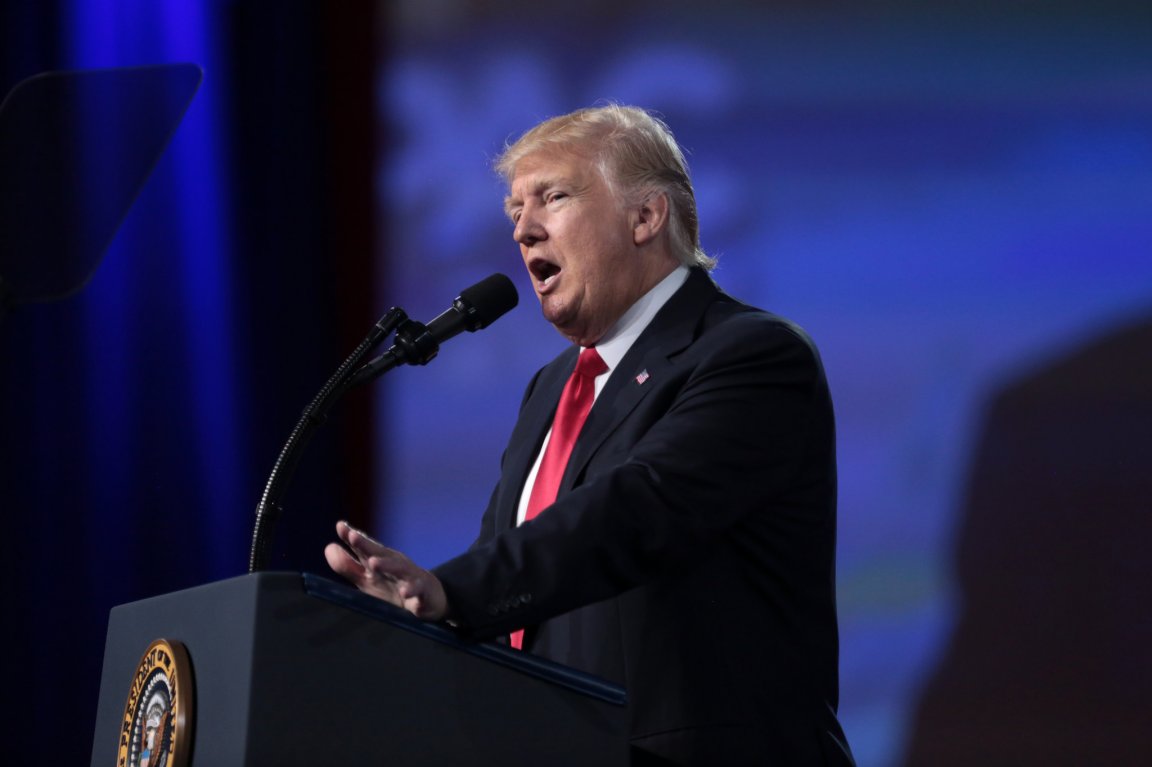
Deep Cuts For Science
President Donald Trump’s proposed budget was released on March 16, and analysis of its cuts began almost immediately. The so-called “skinny budget” will slash funding for the National Institutes of Health (NIH) by $6 billion in 2018 — almost 20 percent. The Office of Science of the Department of Energy (DOE) will lose $900 million, which is also about 20 percent of its budget. Research science programs at the National Oceanic and Atmospheric Administration (NOAA) and Environmental Protection Agency (EPA) will also experience radical cuts of 25 and 40 percent, respectively, while the entire $300 million Advanced Research Projects Agency-Energy budget (part of the DOE) will be eliminated. At NASA, the earth science budget will be cut by 5 percent. The draft proposal is silent on some agencies, like the National Science Foundation (NSF), but the budget in its entirety is a dramatic departure from previous spending patterns.
Biomedical research advocates have expressed grave concerns and stated their opposition, particularly to the cuts being made at the NIH. “A $6 billion cut to [NIH] is unacceptable to the scientific community, and should be unacceptable to the American public as well,” said Benjamin Corbin a statement on behalf of the American Society for Biochemistry and Molecular Biology. “President Donald Trump’s fiscal year 2018 spending plan erases years’ worth of bipartisan support for the NIH, and the American biomedical research enterprise which has long been the global leader for biomedical innovation. Cuts this deep threaten America’s ability to remain a leader.”
Corb’s concerns were echoed by numerous other scientists, “Cutting [research and development] funding from our budget is same as cutting the engines off an airplane that’s too heavy for takeoff,” said Jason Rao, Director of International Affairs at the American Society for Microbiology. The greatest threats to the United States, he says, are those presented by infectious diseases, climate change, and energy production—which cannot be addressed effectively without scientific research.
The NIH is the primary United States government agency responsible for health-related and biomedical research and the largest biomedical research agency in the world. The agency was slated to receive a budget increase of $1-2 billion in the 2017 fiscal year, which started in October of 2016. However, since Congress failed to finish its plan for 2017, spending has been frozen at 2016 levels.
Trading Science For Arms
The DOE’s Office of Science is the country’s lead federal agency supporting fundamental scientific energy research and the largest supporter of basic physical sciences research in the U.S. The office carries out this work through a variety of programs. It also supports research at 10 of the 17 national labs and more than 300 universities. The budget will eliminate the Title 17 loan guarantees for new low-carbon energy projects and the Advanced Technology Vehicle Manufacturing Program — which has helped such companies as Ford develop more-efficient light materials and combustion engines and Tesla develop electric cars. The budget does, however, leave programs related to nuclear arms intact.
The proposed cuts would eliminate funding for coastal management and “coastal resilience,” programs, which boost the ability of coastal areas to withstand rising sea levels and major storms.NOAA scientists study the conditions of the oceans and the atmosphere, which contributes to climate change research. The cuts would also impact external research and estuary reserves programs.
Retired Vice Admiral Conrad Lautenbacher — the NOAA administrator under President George W. Bush — said, “I think the cuts are ill-timed given the needs of society, economy and the military.” He went on to add that, “it will be very hard for NOAA to manage and maintain the kind of services the country requires” with the proposed cuts.
Rick Spinrad, a former chief scientist for NOAA, said: “NOAA’s research and operations, including satellite data management, support critical safety needs. A reduced investment now would virtually guarantee jeopardizing the safety of the American public.”
A senior EPA official told Science that the proposed cuts could cause EPA’s research office “to implode,” and added:
This is serious stuff. We’re all concerned about what might happen, not just to our livelihoods, but to our ability to support the agency’s mission. This is a premier research organization, and it doesn’t take much for the best and the brightest to start looking for other places for work. Even the uncertainty can cause a place to implode, almost, and you don’t build that back quickly if it happens.
NASA’s relatively lightweight 1 percent cut will focus entirely on canceling four climate-related missions: the Plankton, Aerosol, Cloud, ocean Ecosystem program, the Orbiting Carbon-Observatory-3, the CLARREO Pathfinder, and the Deep Space Climate Observatory.
These cuts aren’t entirely due to the president’s disbelief in climate change research, though: they are also needed for the $54 billion cut required to offset the proposed rise in military spending. Dr. Corb commented, “It is of grave concern to the research community that President Trump’s budget proposal—which would fund [NIH] at a 15-year low—values investments in defense above all other federal expenditures.”
Jonathan Adler of the Center for Business Law and Regulation at Case Western Reserve University School of Law points out that decisions at the agency level can be modified or overruled by federal courts, which means that the only way to fundamentally change programs is to change the law by working with Congress—something that requires time, money, staff, and a will to compromise.
“If you cut an agency too much, all you’ve really done is hand the agency’s priorities over to the courts and litigants,” Adler says. “And I’m not really sure that’s what the Trump administration wants.”